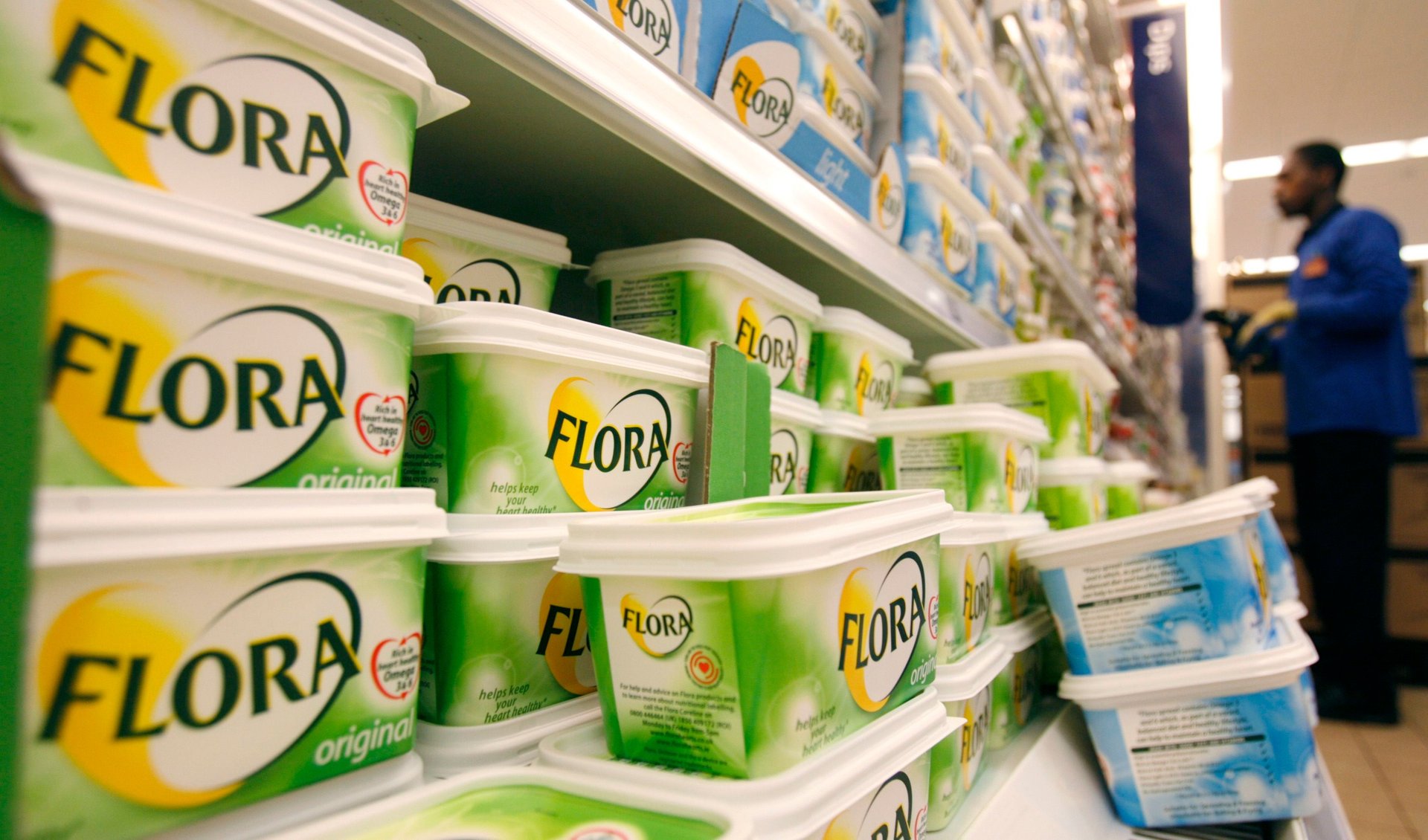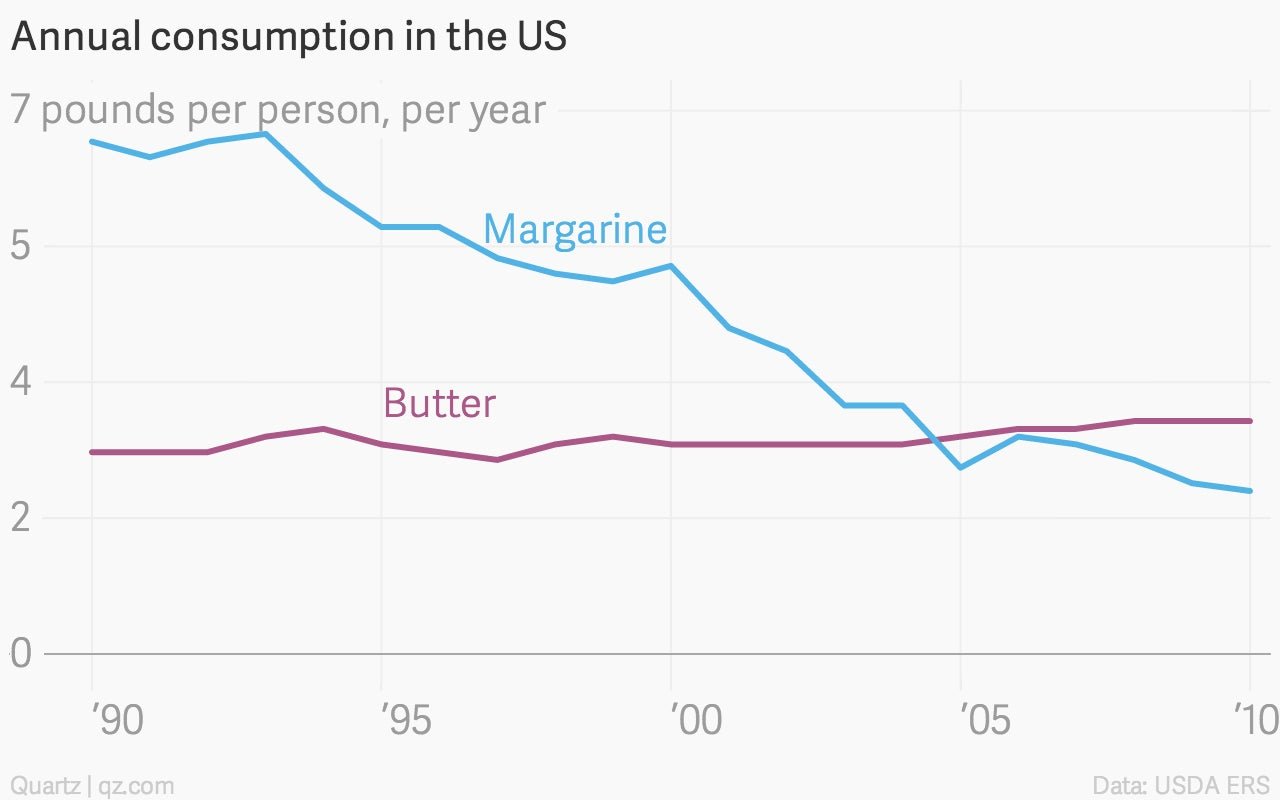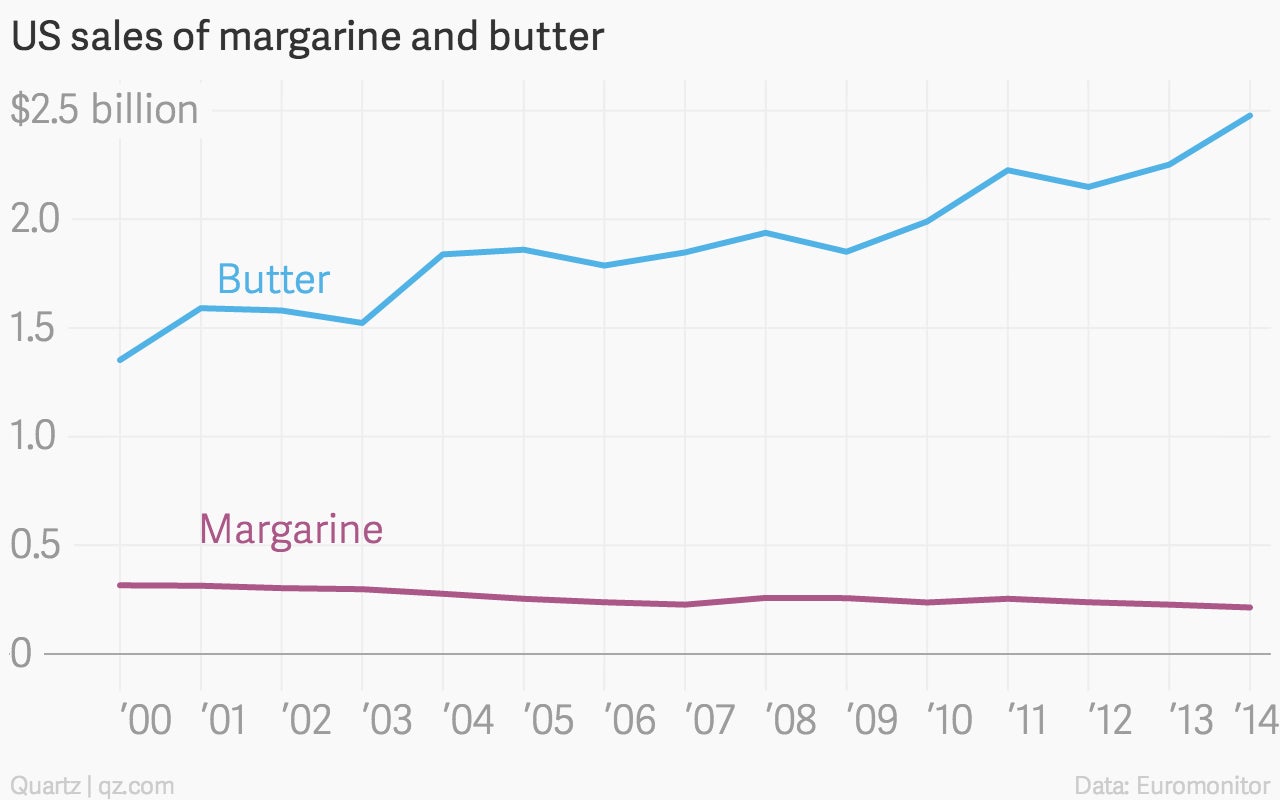Margarine is over—in America, at least
For a food with such a bad rap, margarine still does a pretty brisk business. Global sales of the stuff are up 60% since 2000, according to data from Euromonitor.


For a food with such a bad rap, margarine still does a pretty brisk business. Global sales of the stuff are up 60% since 2000, according to data from Euromonitor.
The problem is, next to butter, that’s not much to write home about—not when butter sales have doubled over the same period.
Another big problem for margarine: the US and its changing relationship with dietary fat, specifically the evolution that occurred between the 1990s and early 2000s. That’s when trans fatty acids, or trans fats, entered the public consciousness, and when margarine consumption suffered the steepest slide in its 100-year US history. Though it’s tough finding data on margarine consumption since 2010, it’s a fair guess that the trend line, which started to flatten out after 2005, has not resumed the torrid pace of descent seen during America’s trans fat awakening—but that’s only because consumption got so low that another drop of that magnitude would mean no one was eating any margarine at all.

It was in 1990 that the New England Journal of Medicine published a study suggesting that trans fats, which are found in margarine and all other processed foods made with partially hydrogenated oil, were no healthier than saturated fats. These days, trans fats are vilified; research shows that they actually are worse for health than saturated (and unsaturated) fats, and the US government is expected to eventually ban them from the food supply.
By that standard, butter came to be seen as just another source of fat; maybe not the best fat, but one that people could eat in moderation.

Unilever, one of the world’s largest consumer goods companies, responded to this shift exactly one year ago (at an investor conference on December 5, 2013) by publicly reneging on its anti-butter stance and re-formulating one of its European spreads with the fatty dairy product.
Today Unilever solidified suspicions that margarine’s not a money-maker anymore, spinning off its spreads division into a standalone company—which observers predict will eventually be sold off.